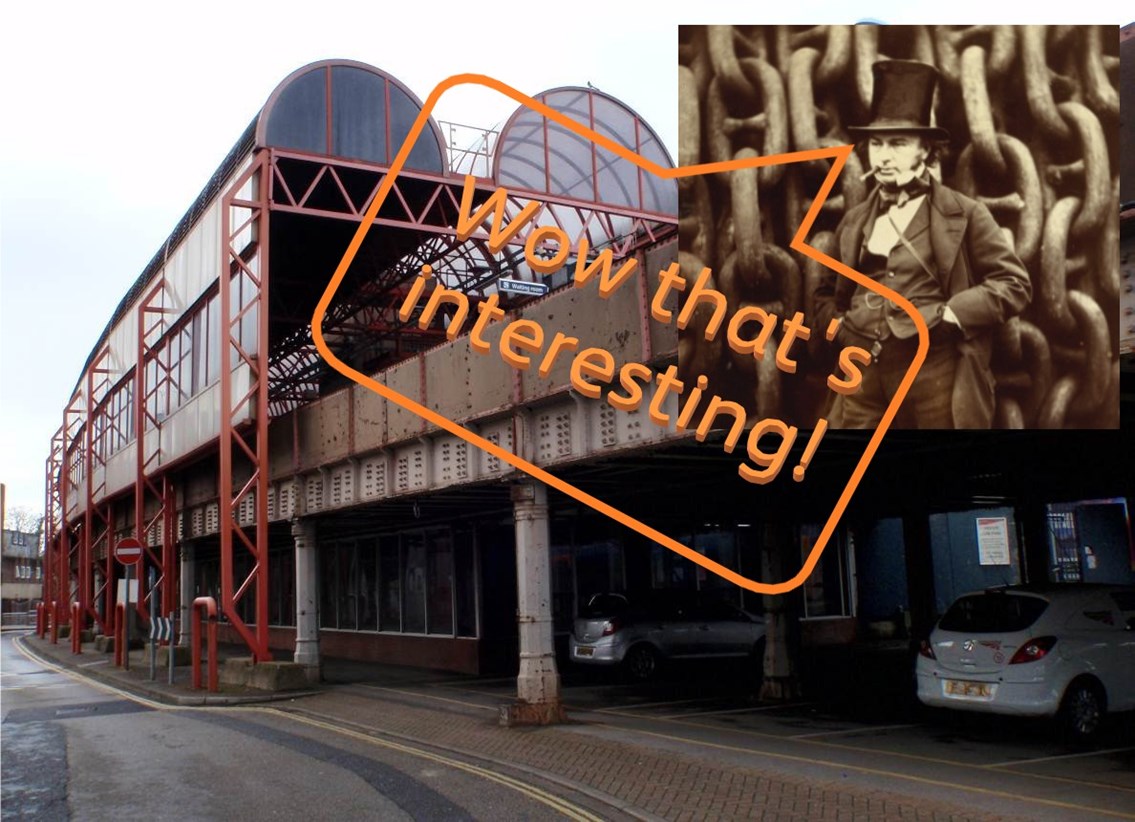Friday 14 Jan 2022
From Brunel to the Battle of Havant - here's 10 fun facts about Portsmouth's railways (and we're starting work on Saturday so please check before you travel)
- Region & Route:
- Southern: Wessex
- | Southern
With our engineers returning to Portsmouth tomorrow (Saturday, 15 January), we delved into the archives to bring you some little-known facts about Pompey's Railway.
- The first ever scheduled train service to arrive in Portsmouth was in 1847, prematurely terminating at Portsmouth Town Station. Instead of stopping due to a signal failure or engine problem, the train was ordered to a halt by the harbour's military authorities who refused to move their fortifications.
- The magnificent Portsmouth & Southsea station was opened on 14 June 1847 and has undergone both name changes and facelifts over the years. Originally it was known as Portsmouth, then renamed Portsmouth Town in 1876, before getting its current name when the original Southsea Railway branch line was closed.
- The London and Croydon Railway planned a line to connect London and Portsmouth in 1845, that would have used a novel ‘atmospheric system’. Trains would be pulled by a complicated series of vacuum tubes and pipes laid alongside the track.
- Portsmouth Harbour was opened in 1876, as part of the Portsmouth Waterside Extension to the Portsmouth Direct Line, between the Harbour and London Waterloo.
- Portsmouth’s original Southsea line played its part in the war effort during WW1. The line was used as overflow siding and Southsea station became a crucial munitions store. Station cleaning was a much riskier affair back then!
- Portsmouth & Southsea’s eye-catching red canopy was built during the 1980s when British Rail was running things. The red colour is the original Network SouthEast livery, which ran things in the area in the late 1980s and early 90s.
- Portsmouth is the birthplace of Isambard Kingdom Brunel, the legendary Victorian civil engineer. He was born in 1806 in Britain Street, round the corner from Portsmouth Harbour station, and his contributions to the railway can still be seen across the country today.
- The battle of Havant shows running the railway in Portsmouth has not always been a cooperative affair! London, Brighton and South Coast Railway battled London and South Western Railway for control over the newly built Portsmouth Direct Line, deploying teams of engineers to sabotage tracks and block trains, with alleged ‘scuffles’ between rival railwaymen. Nowadays, we like to think we work a little better with our colleagues at SWR.
- The Portsmouth railway always had an eye on the future, switching from steam to electric power in 1937. Travel on this new electric service was very different from today, with restaurant facilities as standard on most trains.
- The original Southsea Railway Line running with Portsea was opened in 1885 and closed in 1914, giving it the unfortunate honour of being one of the shortest-lived railways in England as well as being the shortest in length.
Landport Viaduct engineering work details are here.
Notes to Editors
- From Saturday 15 to Saturday 22 January, buses will replace trains from Fratton and Portsmouth & Southsea to Portsmouth Harbour.
- On Sunday 23, buses will replace trains from Havant and Fareham to Portsmouth Harbour.
- On the weekends of Saturday 15 and Sunday 16, plus Saturday 22 and Sunday 23, services between London Waterloo and Portsmouth & Southsea will be diverted via Chertsey, with journeys taking longer than normal.
Contact information
Passengers / community members
Network Rail national helpline
03457 11 41 41
Latest travel advice
Please visit National Rail Enquiries
Journalists
Network Rail press office - Chris Denham
Operational Communications Manager
020 3357 7969
07515 626530
chris.denham@networkrail.co.uk
About Network Rail
We own, operate and develop Britain's railway infrastructure; that's 20,000 miles of track, 30,000 bridges, tunnels and viaducts and the thousands of signals, level crossings and stations. We run 20 of the UK's largest stations while all the others, over 2,500, are run by the country's train operating companies.
Usually, there are almost five million journeys made in the UK and over 600 freight trains run on the network. People depend on Britain's railway for their daily commute, to visit friends and loved ones and to get them home safe every day. Our role is to deliver a safe and reliable railway, so we carefully manage and deliver thousands of projects every year that form part of the multi-billion pound Railway Upgrade Plan, to grow and expand the nation's railway network to respond to the tremendous growth and demand the railway has experienced - a doubling of passenger journeys over the past 20 years.
Follow us on Twitter: @networkrail
Visit our online newsroom: www.networkrailmediacentre.co.uk

